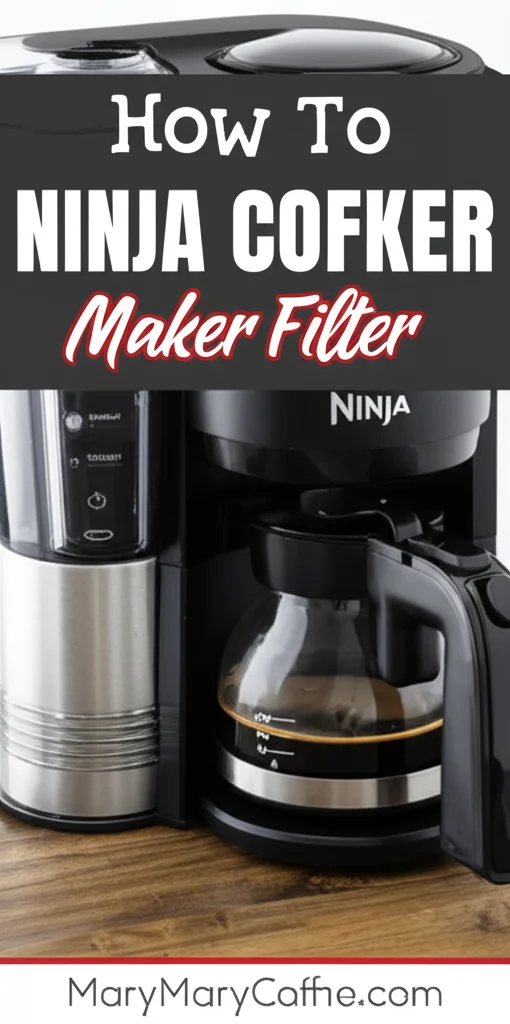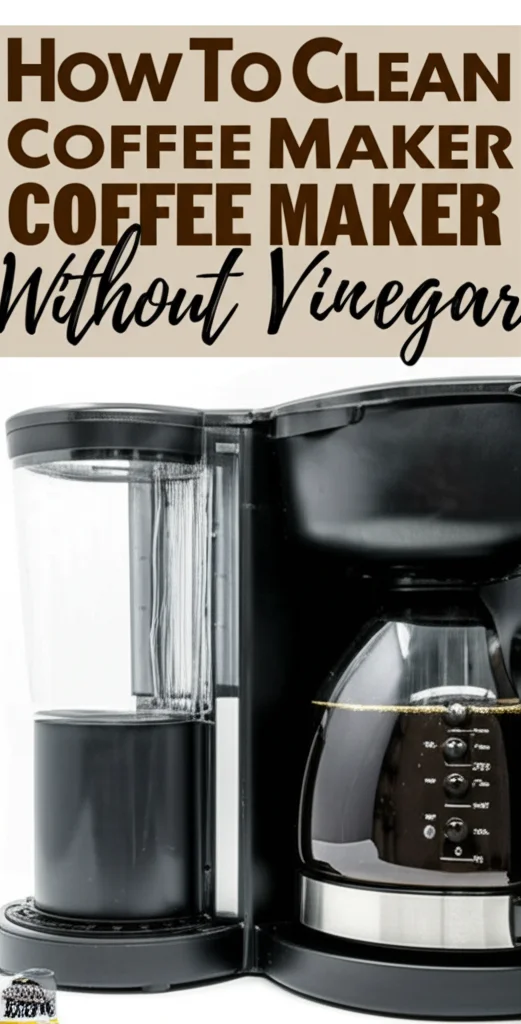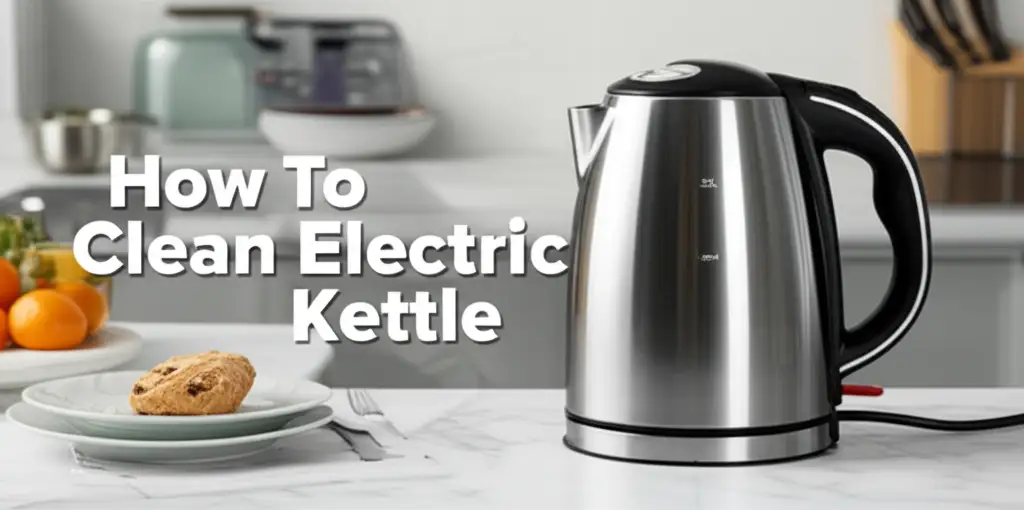· Kitchen Appliances · 17 min read
How To Clean Ninja Coffee Maker Filter

How to Clean a Ninja Coffee Maker Filter: Complete Guide for Perfect Brew
Maintaining a clean coffee maker is essential for brewing the perfect cup of coffee every time. If you own a Ninja coffee maker, knowing how to clean the filter properly can significantly extend your machine’s lifespan and improve your coffee’s taste. Many Ninja coffee maker owners struggle with buildup and residue that can affect performance and flavor.
In this comprehensive guide, we’ll walk through everything you need to know about how to clean Ninja coffee maker filters effectively, using both manufacturer-recommended methods and alternative cleaning solutions.
Quick Takeaway:
- Clean your Ninja coffee maker filter at least once a month
- Use either vinegar solution or descaling solution for deep cleaning
- Regular maintenance prevents mineral buildup and ensures great-tasting coffee
- Different Ninja models may have slightly different cleaning procedures
Let’s dive into the step-by-step process of cleaning your Ninja coffee maker filter to ensure your morning brew is always fresh and delicious.
Why Regular Cleaning of Your Ninja Coffee Maker Filter is Important
Cleaning your Ninja coffee maker filter regularly is not just about maintaining hygiene—it directly impacts the quality of your coffee and the longevity of your machine. Over time, coffee oils, mineral deposits from water, and residue build up in the filter, creating several problems:
First, these buildups can clog the filter and water flow channels, affecting how water passes through your coffee grounds. This leads to inconsistent extraction and ultimately affects the taste of your coffee—often resulting in bitter or weak-tasting brews.
Second, mineral deposits (especially from hard water) can damage internal components of your coffee maker over time. These deposits, known as scale, are particularly problematic because they can reduce heating efficiency and even cause complete system failure if left untreated.
Finally, old coffee residue and moisture create perfect breeding grounds for mold and bacteria. This not only creates unpleasant odors but can potentially affect your health.
According to Ninja’s recommendations, you should clean your coffee maker filter thoroughly at least once a month, although weekly rinses are beneficial for maintaining optimal performance. If you notice your coffee maker taking longer to brew or your coffee tasting unusual, these are clear signs that it’s time for a clean.
What You’ll Need to Clean Your Ninja Coffee Maker Filter
Before starting the cleaning process, gather all necessary supplies to make the task easier and more efficient. Here’s what you’ll need:
- White distilled vinegar (for vinegar cleaning method)
- Commercial descaling solution (alternative to vinegar)
- Clean, soft cloths or paper towels
- Soft brush (an old toothbrush works well)
- Dish soap (mild, unscented)
- Warm water
- Clean container for soaking
- Baking soda (optional, for stubborn stains)
For thorough cleaning, you should have a clear workspace with access to running water. If your Ninja coffee maker has been particularly neglected, you might want to prepare extra cleaning solution as stubborn mineral deposits may require additional soaking time.
The beauty of cleaning your Ninja coffee maker filter is that most of these supplies are likely already in your home, making this an easy and cost-effective maintenance task. Using the right tools will ensure that you can clean effectively without damaging the delicate parts of your filter system.
Remember that different Ninja coffee maker models may have slightly different filter types—permanent mesh filters, paper filters, or pod-style systems. The cleaning approach varies slightly depending on which type you have, so consult your user manual if you’re unsure about your specific model.
How to Clean Ninja Coffee Maker Filter with Vinegar
One of the most effective and economical ways to clean your Ninja coffee maker filter is using white distilled vinegar. This method is particularly useful for removing mineral deposits and limescale buildup. Here’s how to do it properly:
Step 1: Prepare Your Coffee Maker
Before starting, make sure your coffee maker is turned off and unplugged. Remove any coffee grounds from the filter basket and dispose of them. If you use a permanent filter, remove it from the machine.
Step 2: Create a Vinegar Solution
Mix equal parts white distilled vinegar and cold water. For most Ninja coffee makers, a solution of 2 cups vinegar and 2 cups water works well. The acidity in vinegar effectively dissolves mineral deposits without damaging your machine’s components.
Step 3: Clean the Removable Filter
If your Ninja model has a removable permanent filter:
- Submerge it in the vinegar solution for 30-60 minutes
- Use a soft brush to gently scrub away any visible residue
- Rinse thoroughly with clean water until no vinegar smell remains
Step 4: Run a Cleaning Cycle
For models with a built-in “Clean” function:
- Pour the remaining vinegar solution into the water reservoir
- Place the empty carafe on the warming plate
- Press the “Clean” button to start the cleaning cycle
For models without a dedicated clean button:
- Pour the vinegar solution into the water reservoir
- Run a full brew cycle with no coffee grounds
- Allow the solution to work through the entire system
Step 5: Rinse Thoroughly
After completing the vinegar cleaning cycle:
- Fill the water reservoir with fresh, cold water
- Run at least two full brew cycles with just water
- This removes any lingering vinegar taste or smell
How much vinegar to clean your Ninja coffee maker depends on your water reservoir size, but typically using a 1:1 ratio of vinegar to water is effective. For especially stubborn deposits, you might increase to a 2:1 ratio of vinegar to water.
This vinegar cleaning method should be performed monthly for best results, especially if you live in a hard water area where mineral buildup occurs more rapidly. Not only will this keep your filter clean, but it will also maintain the internal components of your coffee maker in optimal condition.
How to Clean Ninja Coffee Maker Filter with Clean Button
Many Ninja coffee maker models feature a convenient “Clean” button specifically designed to facilitate the descaling process. This feature makes maintenance significantly easier and ensures thorough cleaning of both the filter and internal components. Here’s how to properly use this function:
Understanding the Clean Indicator Light
Most Ninja coffee makers with this feature have a “Clean” indicator light that illuminates when the system detects mineral buildup. Don’t ignore this light—it’s a helpful reminder that your machine needs attention to continue functioning optimally.
Step-by-Step Cleaning Process:
Prepare the cleaning solution: Fill the water reservoir with equal parts white vinegar and water. For standard-sized Ninja coffee makers, use about 16 ounces of each. Alternatively, you can use Ninja’s recommended descaling solution following package instructions.
Position your carafe: Make sure the empty carafe is properly positioned on the warming plate to catch the cleaning solution.
Activate the Clean cycle: Press the dedicated “Clean” button. The cycle will begin, and the machine will automatically run the solution through the entire system, including the filter assembly.
Let the cycle complete: The cleaning cycle typically takes 20-30 minutes to finish. During this time, the machine will pulse the cleaning solution through all components to dissolve mineral deposits and flush out coffee residue.
Rinse thoroughly: After the Clean cycle finishes, discard the solution and fill the reservoir with fresh water. Run at least two full brew cycles with just water to thoroughly rinse the system.
Clean the filter separately: If your Ninja coffee maker has a removable permanent filter, take additional steps to clean it while the machine completes its cleaning cycle:
- Rinse the filter under warm running water
- Use a soft brush to remove any stubborn coffee particles
- For excessive buildup, soak in warm, soapy water for 10 minutes
- Rinse thoroughly and allow to dry completely before reinstalling
The “Clean” button function is particularly valuable for cleaning the internal components that you can’t reach manually. Using this feature regularly—ideally when the indicator light comes on or once every 1-2 months—will help maintain consistent brew quality and extend your coffee maker’s lifespan.
For Ninja coffee maker models without a dedicated Clean button, you can still achieve similar results by manually running a vinegar solution through a standard brew cycle as described in the previous section.
How to Clean Ninja Coffee Maker Water Reservoir and Tank
The water reservoir of your Ninja coffee maker requires special attention during cleaning as it’s where water sits before brewing and can be prone to mineral buildup and even mold growth if neglected. Here’s how to properly clean this crucial component:
Daily Maintenance
For optimal cleanliness, empty any remaining water from the reservoir after each use. This prevents stagnant water from developing mineral deposits or becoming a breeding ground for bacteria.
Weekly Cleaning
Once a week, give your water reservoir a more thorough cleaning:
Remove the reservoir: Most Ninja coffee maker models feature a removable water tank. Take it out completely from the machine.
Handwash with mild soap: Use warm water and a small amount of mild dish soap to clean the interior and exterior surfaces. Avoid abrasive sponges that might scratch the plastic.
Pay attention to corners: Use a soft brush (like a bottle brush) to reach the corners and crevices where buildup might accumulate.
Rinse thoroughly: Ensure all soap residue is completely rinsed away to prevent it from affecting the taste of your coffee.
Air dry completely: Allow the reservoir to air dry completely before returning it to the coffee maker. This prevents moisture from being trapped inside, which could lead to mold growth.
Deep Cleaning (Monthly)
During your monthly deep clean:
Soak with vinegar solution: Fill the reservoir with a solution of equal parts water and white vinegar. Let it sit for 30 minutes to dissolve mineral deposits.
Scrub gently: Use a soft brush to loosen any stubborn deposits.
Rinse multiple times: Rinse thoroughly with fresh water multiple times until no vinegar smell remains.
Address the water intake area: Clean the area where the reservoir connects to the coffee maker with a damp cloth, as minerals can accumulate at this connection point as well.
If your Ninja coffee maker has a fixed water tank that cannot be removed, you’ll need to adapt these steps. Fill the tank with the cleaning solution and run it through a brew cycle, followed by multiple clear water cycles to rinse the system thoroughly.
Regular cleaning of the water reservoir helps prevent hard water stains and ensures that your coffee always starts with the cleanest possible water, directly impacting the flavor of your brew.
How to Clean Ninja Coffee Maker Without Vinegar
While vinegar is an effective cleaning agent for coffee makers, some people prefer alternatives due to concerns about lingering vinegar odors or taste. Fortunately, there are several effective ways to clean your Ninja coffee maker filter without using vinegar:
Commercial Descaling Solutions
Specialized coffee maker descaling products are formulated specifically for removing mineral deposits from coffee machines:
- Purchase a descaling solution compatible with Ninja coffee makers (available at most kitchen supply stores)
- Follow the manufacturer’s instructions for dilution ratios
- Run the solution through your coffee maker as you would with the vinegar method
- Complete at least two rinse cycles with fresh water
These products are often more concentrated than vinegar and may work faster on stubborn deposits.
Citric Acid Solution
Citric acid is a natural alternative that effectively dissolves mineral buildup:
- Dissolve 2 tablespoons of citric acid powder in 4 cups of water
- Pour this solution into your water reservoir
- Run a brew cycle
- Follow with two clear water cycles to rinse
Citric acid leaves less residual odor than vinegar while still effectively removing limescale.
Lemon Juice Solution
Fresh lemon juice contains natural acids that can clean your coffee maker:
- Mix equal parts fresh lemon juice and water
- Pour the mixture into the water reservoir
- Run a complete brew cycle
- Rinse with at least two clear water cycles
This method leaves a pleasant citrus scent rather than the strong smell of vinegar.
Baking Soda (For Filter Only)
For cleaning just the removable filter component:
- Create a paste with baking soda and water
- Apply the paste to the filter and gently scrub with a soft brush
- Let it sit for 10 minutes
- Rinse thoroughly with warm water
Baking soda works well for removing coffee oils and stains without harsh chemicals.
When using alternative cleaning methods, you might need to repeat the process more frequently than with vinegar, as some alternatives may be slightly less effective at dissolving stubborn mineral deposits. However, they offer the benefit of avoiding any potential vinegar taste in your next brew.
These alternative cleaning methods are particularly useful for people who are sensitive to the smell of vinegar or who want to avoid having their kitchen smell strongly during the cleaning process.
Maintenance Tips for Keeping Your Ninja Coffee Filter Clean
Preventing buildup in your Ninja coffee maker filter is much easier than dealing with stubborn deposits later. Here are practical maintenance tips to keep your filter in optimal condition:
Daily Practices
- Rinse immediately after use: Once your coffee maker has cooled down, remove the filter and rinse it under warm running water to remove coffee grounds and oils before they dry and adhere to the filter.
- Dispose of grounds promptly: Never leave used coffee grounds in the filter for extended periods as they can harden and become difficult to remove.
- Leave components to dry: After rinsing, leave the filter basket in a well-ventilated area to dry completely before reassembling. This prevents moisture-related issues like mold.
Weekly Maintenance
- Handwash with mild soap: Once a week, wash the removable filter with warm water and mild dish soap. Gently scrub with a soft brush to remove any residual oils.
- Check for residue: Examine the filter mesh for any clogged holes or buildup and address them before they become problematic.
- Clean the filter holder: Don’t forget to wipe down the area where the filter sits, as coffee grounds and oils can accumulate there as well.
Monthly Best Practices
- Deep clean with descaling solution: Perform a thorough cleaning with vinegar or a commercial descaler once a month, even if you don’t see visible buildup.
- Inspect for damage: Check your filter for any signs of wear or damage that might affect its performance or contribute to grounds ending up in your coffee.
- Address water quality: If you live in a hard water area, consider using filtered water in your coffee maker to reduce mineral buildup. Alternatively, you might need to clean more frequently.
Seasonal Maintenance
- Replace if necessary: Even permanent filters don’t last forever. If your metal mesh filter shows signs of damage or continues to allow grounds through despite cleaning, it may be time for a replacement.
- Deep clean the entire system: Quarterly, perform a comprehensive cleaning of the entire coffee maker, including all removable parts, to ensure optimal performance.
By following these maintenance practices, you’ll extend the life of your Ninja coffee maker filter and ensure consistent coffee quality. Remember that different Ninja models may have slightly different components, so always consult your specific model’s user manual for any special maintenance instructions.
Consistent maintenance not only ensures great-tasting coffee but also prevents issues with other kitchen appliances that can develop when cleaning is neglected.
Troubleshooting Common Ninja Coffee Maker Filter Problems
Even with regular maintenance, you might encounter some challenges with your Ninja coffee maker filter. Here are solutions to common problems:
Coffee Grounds in Your Cup
If you’re finding coffee grounds in your brewed coffee:
- Check filter placement: Ensure the filter is seated properly in the basket
- Inspect for damage: Look for tears or holes in paper filters or damage to permanent mesh filters
- Use appropriate grind size: Too fine a grind can pass through filter mesh—adjust your grinder to a coarser setting
- Clean filter thoroughly: Clogged mesh can cause water to overflow, carrying grounds into your cup
Slow Brewing or Incomplete Cycles
When your coffee maker takes longer than usual to brew:
- Descale immediately: Mineral buildup is likely restricting water flow through the filter
- Check for clogging: Ensure the filter holes aren’t blocked with coffee oils or mineral deposits
- Clean the shower head: The component that sprays water over the grounds can also become clogged
- Verify water flow: Pour water through the empty filter to see if it passes through freely
Coffee Tastes Bitter or Off
If your coffee quality has declined:
- Rule out cleaning residue: Ensure you’ve thoroughly rinsed after cleaning with vinegar or other solutions
- Check for mold or mildew: Inspect filter components for any signs of growth that could affect taste
- Test water quality: Sometimes the issue isn’t the filter but the water you’re using
- Verify coffee freshness: Old coffee can taste bitter regardless of filter cleanliness
Filter Stains That Won’t Come Out
For persistent discoloration:
- Try oxygen bleach solution: Create a solution with oxygen-based bleach (not chlorine bleach) and soak the filter
- Use baking soda paste: Make a paste with baking soda and water, apply to stains, and scrub gently
- Consider lemon juice: The natural acids can help brighten discolored filters
- Accept some staining: Some discoloration is normal and doesn’t affect performance or taste
Clean Light Stays On After Cleaning
If your Ninja coffee maker’s clean indicator won’t turn off:
- Repeat the cleaning cycle: Run another full cleaning cycle with fresh descaling solution
- Reset the machine: Unplug the coffee maker for 5 minutes, then plug it back in
- Check user manual: Some models require specific reset procedures after cleaning
- Contact customer support: If the light persists, there may be an electronic issue
Understanding these troubleshooting tips can help you address common issues before they require professional intervention. Most filter problems can be resolved with proper cleaning and maintenance, ensuring your Ninja coffee maker continues to produce delicious coffee for years to come.
For more cleaning tips related to kitchen appliances, check out how to clean baked-on grease from aluminum pans.
FAQ: Common Questions About Cleaning Ninja Coffee Maker Filters
How often should I clean my Ninja coffee maker filter?
Rinse your filter daily after use to remove coffee grounds and oils. Perform a deep clean with vinegar or descaling solution once a month or when the clean indicator light comes on. If you have hard water, you might need to clean more frequently to prevent mineral buildup.
Can I put my Ninja coffee maker filter in the dishwasher?
This depends on your specific model. Some Ninja permanent filters are dishwasher-safe (top rack only), while others must be hand-washed. Always check your user manual for specific instructions. When in doubt, hand washing with mild soap and warm water is the safest option to prevent damage.
Why does my Ninja coffee maker say “Clean” even after I’ve cleaned it?
The clean indicator is triggered by the machine detecting mineral buildup. If it remains on after cleaning, you may need a more thorough descaling process or multiple cleaning cycles. Some models also require a specific reset procedure after cleaning—refer to your user manual for model-specific instructions.
How do I know if my Ninja coffee filter needs replacement?
Signs that you need a new filter include: visible damage to the mesh, persistent coffee grounds in your brewed coffee despite proper cleaning, significantly slowed brewing times that don’t improve after cleaning, or filter discoloration that doesn’t respond to cleaning efforts.
Can I use bleach to clean my Ninja coffee maker filter?
No, avoid using chlorine bleach as it can damage components and leave harmful residues. Stick to food-safe cleaning solutions like vinegar, commercial descalers, or citric acid. If you’re concerned about discoloration, oxygen-based bleach (like OxiClean) diluted according to package directions is safer for occasional deep cleaning.
Is descaling solution better than vinegar for cleaning my Ninja coffee maker?
Commercial descaling solutions are formulated specifically for coffee makers and may work more effectively on stubborn mineral deposits. They also typically leave less residual odor than vinegar. However, vinegar is more economical and readily available, making it a practical choice for regular maintenance.
Final Words: Keeping Your Ninja Coffee Maker in Top Condition
Maintaining a clean Ninja coffee maker filter is essential for brewing delicious coffee and ensuring your machine’s longevity. Regular cleaning prevents mineral buildup, removes coffee oils, and keeps your brewing system functioning efficiently. By following the guidance in this article, you now have all the knowledge needed to keep your Ninja coffee maker filter in optimal condition.
Remember that consistency is key—a quick rinse after each use and deeper cleaning monthly will prevent most problems before they start. Whether you choose to clean your Ninja coffee maker filter with vinegar, commercial descaling solution, or natural alternatives, the important thing is establishing a regular maintenance routine.
Your coffee experience is directly impacted by the cleanliness of your equipment. A well-maintained Ninja coffee maker will reward you with better-tasting coffee, consistent brewing performance, and fewer mechanical issues over time.
For best results, always follow the specific guidelines in your model’s user manual, as Ninja coffee makers come in various designs with slightly different cleaning requirements. By making filter cleaning a regular part of your coffee routine, you’ll ensure that every cup is as perfect as possible.
Want to keep the rest of your kitchen as clean as your coffee maker? Learn how to clean greasy hardwood floors for a completely spotless kitchen environment.
- Ninja Coffee Maker
- Coffee Maker Cleaning
- Filter Cleaning
- Kitchen Cleaning
- Appliance Maintenance




